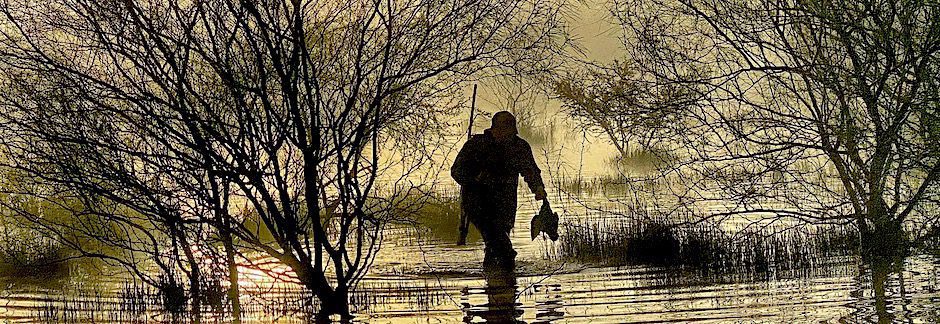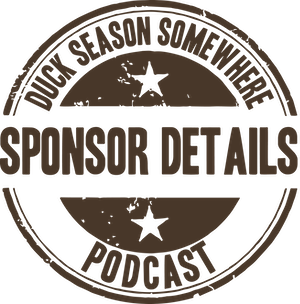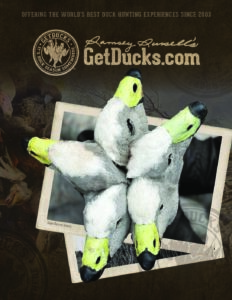MOJO’S Duck Season Somewhere Podcast
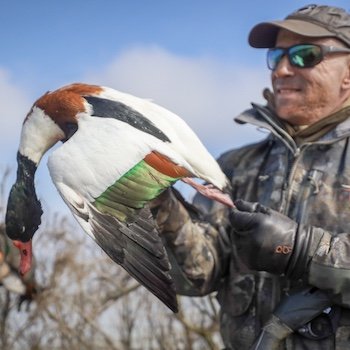
For 365 days per year, it really is duck season somewhere. Ramsey Russell’s year-long duck hunting quest takes him worldwide, 6 whole continents worth of duck hunting adventures. And MOJO’S Duck Season Somewhere podcast brings it all home to listeners. Pull up a seat and join host Ramsey Russell, founder of GetDucks.com, as he meets with genuine waterfowl hunters, biologists and storytellers from around the globe.
Please subscribe, rate and comment. Share your favorite episodes with your buddies. Business inquiries or suggestions, contact Ramsey Russell ramsey@getducks.com.
Sponsors:
MOJO Outdoors • BOSS Shotshells • Benelli Shotguns • Tetra Hearing • Ducks Unlimited • Voormi • Tom Beckbe • HuntProof App • Flashback Decoys
• GetDucks • USHuntList
It’s duck season somewhere for 365 days per year, and Ramsey Russell chases them everywhere year-round. Connect with Ramsey’s real duck hunting adventures: Instagram @ramseyrussellgetducks, YouTube @GetDucks, Facebook @GetDucks.com
Duck Season Somewhere Podcast Media Kit
EP 625. Where Simplicity Meets Results: Shotgun Patterning
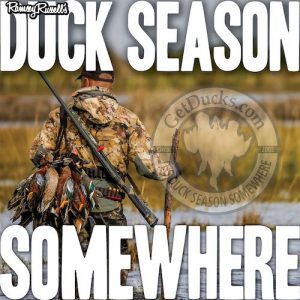
Early mornings. Long rides. Hard scouting. Greasy meals. High fuel costs. Wet. Cold, wind, sleet. Else too hot. But when it all comes together? Waterfowl give it up, presenting themselves right over the decoys. But if your shotgun’s not patterning right, you’re probably missing more than you should! “It’s where simplicity meets results,” explains Pattern Pros’ Ryan Burnett. We blast down range, covering chokes, truths from the patterning board, selecting the best ammo for your shotgun without breaking the bank, other important benefits, public perception–and why patterning kills more birds than the latest gimmick ever will. Boom!
EP 624. End of an Era: Coastal Texas Snow Goose Hunting (Part 2/3)

PART 2/3 BOOM YEARS. In a single, recent American generation, Coastal Texas snow goose hunting went from boom to bust–from a fabled hunting experience that drew hunters from around the world to a soon-to-be chapter in history. This 3-part series explores the rise and fall of snow goose hunting on the Katy Prairie–its boom, culture, decline, and lasting legacy. Legendary Texas outfitter Larry Gore–whose high school project became a half-century guiding career– his son Isaac, to whom he’s passed the torch, and Texas waterfowl historian Rob Sawyer, paint a colorful picture that some may remember, but that is forever gone. In this episode: What made the Katy Prairie so uniquely attractive to snow geese? What was it to live and work in the spectacle? What was it like as a kid tagging along? The daily routine, colorful characters, how decoys and calls evolved, Texas snow goose hunting culture and respect, heyday picking houses, conservation order limits, shifting client expectations and behavior, snow goose hunting quality decline, and more.
EP 623. Real Memphis Barbecue Culture

Memphis barbecue? Beyond the smoke, rubs, sauce, and off-in-the-distance blues music there’s craft. Culture. The kind of stories you get only if you ask the right person. Someone like Ernie Mellor–Hog Wild BBQ pitmaster and inventor of barbecue nachos. Mellor takes us on a behind-the-scenes tour of the real Memphis barbecue scene, peeling back the bark to reveal the people, places, art, inspiration and passion in America’s barbecue capital. Roll up your sleeves, folks. And dig in!
EP 622. End of an Era: Coastal Texas Snow Goose Hunting (Part 1)

EPISODE 1/3 GETTING STARTED. In a single, recent American generation, Coastal Texas snow goose hunting went from boom to bust–from a fabled hunting experience that drew hunters from around the world to another soon-to-be chapter in history. This 3-part series explores the rise and fall of snow goose hunting on the Katy Prairie–its boom, culture, decline, and lasting legacy. Legendary Texas outfitter Larry Gore–whose high school project became a half-century guiding career– his son Isaac, to whom he’s passed the torch, and Texas waterfowl historian Rob Sawyer, paint a colorful picture that some may remember, but that is forever gone. In today’s episode: what’d the Texas landscape and snow goose hunting look like 50 years ago? How’d a kid manage leases, landowners and clients? How’d a high school project become a life calling? Mentors, hardest lessons learned, advice to aspiring young outfitters?
EP 621. Go Hard or Stay Home

How much effort are you really willing to put into going duck hunting? And why? Hayden Martin’s answer: whatever it takes. Duck hunting keeps him grounded. As much for the everything else as for the trigger pulls. This episode reveals his grit and determination, and digs into an approach to duck hunting we might all do well remembering.
EP 620: Green-Tree Reservoir Habitat Management

Flooded green timber is distinctively the most iconic habitat in the duck hunting world–but unlike making instant coffee, managing green tree reservoirs involves more than just adding water. Way more. Joined by Ryan Askew and Brandon Bennett from Five Oaks, we break down what makes a true GTR, why bottomland hardwoods matter, the right way to flood and draw down, and the growing challenges—tree mortality, desirable red oak regeneration, now-versus-later management preferences—that threaten their future. Packed with history, science, and hard-earned lessons, this episode reveals how hunters and land managers can keep green-tree reservoir habitats thriving for generations.
EP 619. The “Monsters” Among Us: Giant Snapping Turtles

Think about it next time you’re standing crotch-deep in ankle-grabbing swamps: there’re some fascinating, rarely seen but real monsters lurking nearby. Greg Brashear pulls back the shell on one of North America’s oldest creatures. From campfire legends to alligator snappers the size of dinosaurs, Greg unpacks their hidden lives, astonishing longevity, life history–y’all won’t believe the amazing crushing power they possess–and why these living fossils matter now more than ever. A journey into folklore, fieldwork, and conservation—all through the eyes of a man who’s spent his life among them.
EP 618. Practical Duck Habitat Management

Greg Homan doesn’t quote textbooks—he builds duck habitat that works. With years on a tractor and a lifelong passion for waterfowl, he shares hands-on wisdom about moist-soil management, smart water control, and what hunters should watch this season to prepare their place for stacking birds next fall. No fluff. No theory. Just the kind of real-world advice duck hunters and landowners can use now.
Ep 617. Making Magic at Migra

Pulling back the curtain on how Migra makes their ammo stand apart from the rest, engineer Ed Springer discusses his background, Migra’s patented technology, the painstaking process of designing the ultimate 28-gauge round for yours truly–y’all aint going to believe the first 3 trigger pulls–WOW!–and explains the innovation, testing, and engineering vision that drive Mitra’s reputation for performance. This e[sidoe blends technical insight with storytelling, giving hunters a rare look into how cutting-edge ideas are reshaping waterfowl hunting’s future duck-getting ammo!
EP 616. Sweden Goose Hunting

Following the morning scouting trip where thousands of greylag, Canada, and barnacle geese were seen, we huddle in a Swedish man cave full of motorcycles, game heads, and Viking artifacts to talk geese. Sweden’s goose hunting comes alive in this wide-ranging conversation–origins, landscapes, species, tactics, philosophies, public attitudes, food traditions, lodging, unforgettable hunts. A deep look at waterfowl hunting and culture north of the Baltic.

